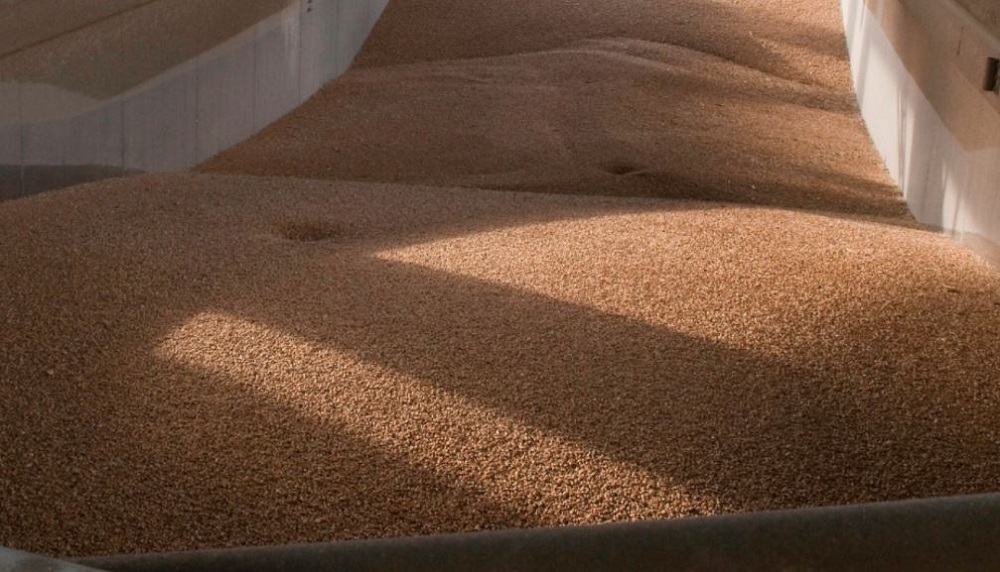- Home
- Knowledge library
- The main components of yield in wheat
The main components of yield in wheat
From the number of ears to the weight of individual grains, this page outlines the main components of wheat yields. It also includes the main crop benchmarks for yield and protein.
Growth guides for wheat, barley and oilseed rape
Grain yield and its components
Benchmark: 11.0 t/ha at 15% moisture
Varietal influence: Medium
Other influences: Radiation and rainfall, soil type, soil depth and condition, all aspects of husbandry
Benchmarks: 460 ears/m2, 48 grains/ear, 50 mg/grain
Varietal influence: Ear number and grain weight – medium. Grains/ear – high
Other influences: All aspects of husbandry, weather
Grain yield is the product of three components: ears/m2, grains/ear and individual grain weight.
- Ear number reflects growth from the start of tillering to flag leaf appearance (GS39)
- Grains/ear reflects growth from GS39 to GS61 (flowering)
- Individual weight/grain reflects growth after flowering
Grain is the principal product of crop growth, especially in June and July. Yields depend on the state of the crop leading into this period and growing conditions during this period. Each phase partially compensates for the outcome of earlier phases. A crop with a sparse shoot density tends to produce more grains/ear and heavier grains than a thick crop. Conversely, poor performance in one phase increases reliance on good growing conditions in later phases, so the yield is at greater risk from adverse weather.
In relation to the genetic component of grain yield, use the AHDB Recommended Lists to understand performance of varieties.
AHDB Recommended Lists home page
Final distribution of dry matter
Benchmark: 18.4 t/ha dry matter with 51% Harvest Index
Varietal influence: Total crop dry matter – medium
Harvest Index: High
Other influences: All aspects of husbandry
The Harvest Index (HI) is the proportion of total dry crop biomass growth (dry matter) that is harvested as grain.
The benchmark dry matter of the harvest-ripe crop is 18.4 t/ha, of which 9.4 t/ha is grain (equivalent to 11.0 t/ha at 15% moisture).
The remaining 9 t/ha of dry matter includes straw, chaff and stubble. Only about half of this can be baled as straw, even when the height of the combine cut is low.
Much variability in crop dry weight comes through changeable production of non-harvestable material.
Final dry matter distribution in wheat:
- 51% grain
- 32% stem (straw)
- 11% chaff
- 6% leaves and dead shoots
Is it better to incorporate or sell straw?
Grain protein and its formation
Benchmark: 189 kg/ha N or 1.1 t/ha protein
Varietal influence: Low
Other influences: N rate and timing
Most grain protein is formed from redistributed nitrogen (N). Around 158 kg/ha of N comes mainly from stems, leaves and roots as they die. Only an additional 31 kg/ha of grain N comes from uptake after flowering.
The straw and chaff contain 90 kg/ha N at harvest – 32% total crop N – making the N harvest index 68%.
The weight of grain protein relates directly to the weight of N, with a ratio of 5.7 to 1. The benchmark amount of grain N is 189 kg/ha, equating to about 1.1 t/ha protein. Soil type, season and husbandry all influence grain protein deposition.
Generally, the later N fertiliser is applied, the more grain N is increased. Applying urea as a spray when grain is milky ripe (GS75) has the largest effect on grain N, but normally has little effect on yield. High levels of grain N are essential for wheat destined for breadmaking.
How to measure grain yield
Accurate measurement of yield is essential to assess the success of husbandry and plan approaches for future yield enhancement.
Yield mapping combines are now common, but it is important that these are set up appropriately and calibrated.
If mapping is not available, grain can be weighed over a weighbridge. The moisture content of the grain must be known so that yields can be adjusted to 85% dry matter.
On a smaller scale, yield and Harvest Index (HI) can be determined from quadrat samples taken just before harvest.
To determine the HI, after weighing the whole dried sample, the grain should be threshed and weighed separately.
HI (%) = Dry weight of grain ÷ Dry weight of whole plant (grain, straw, chaff) × 100
It is important to know the moisture content of grain to determine yield at 85% dry matter and to store grain effectively (including drying strategies).
For the grain weight, the thousand grain weight (TGW) is the commonly used metric measurement. Weigh out 40 g of dried grain as accurately as possible. Count the number of grains in this sample, then calculate the TGW using:
TGW (g) = (Weight of dried grain sample (g) ÷ Number of grains in sample) x 1000
 AHDB
AHDB

